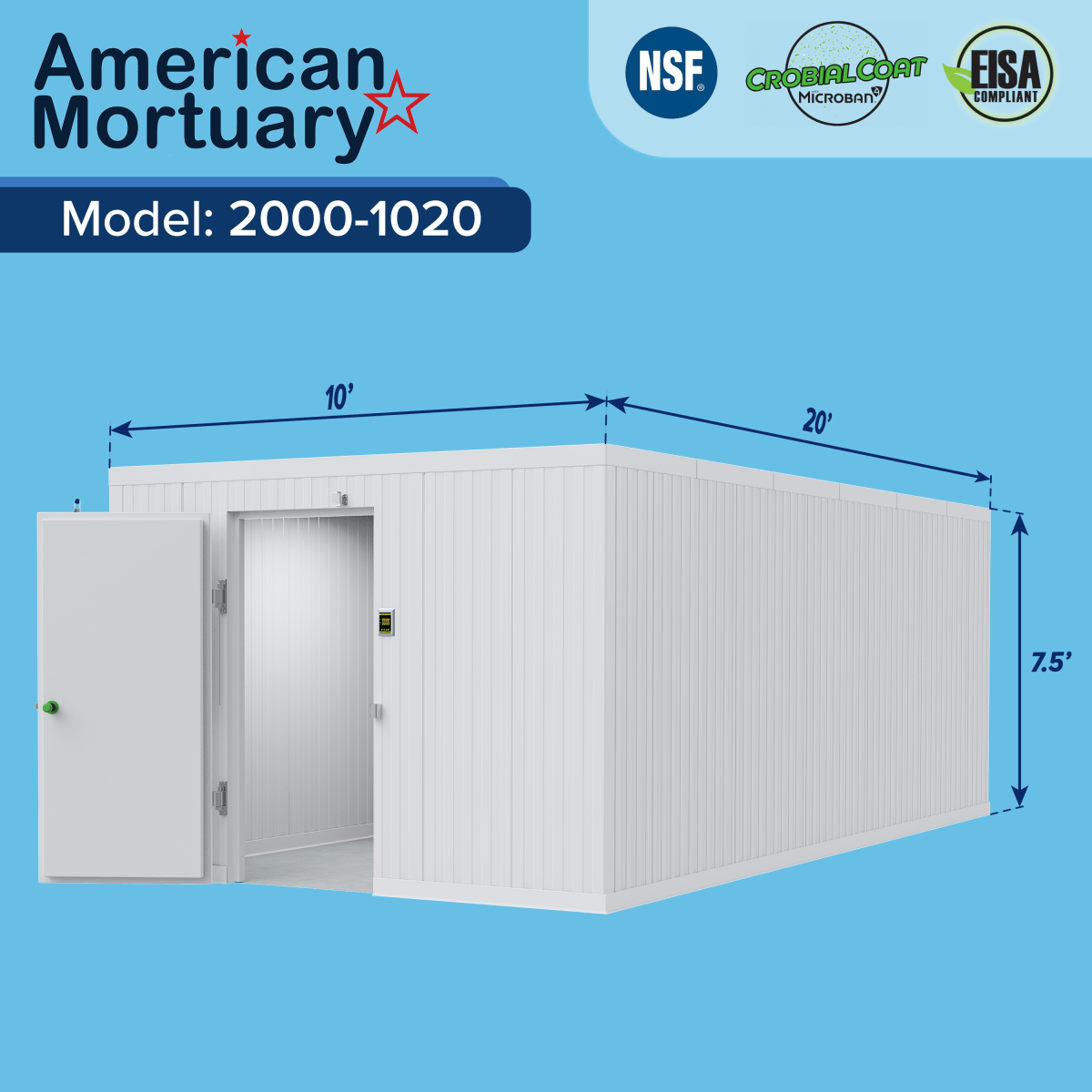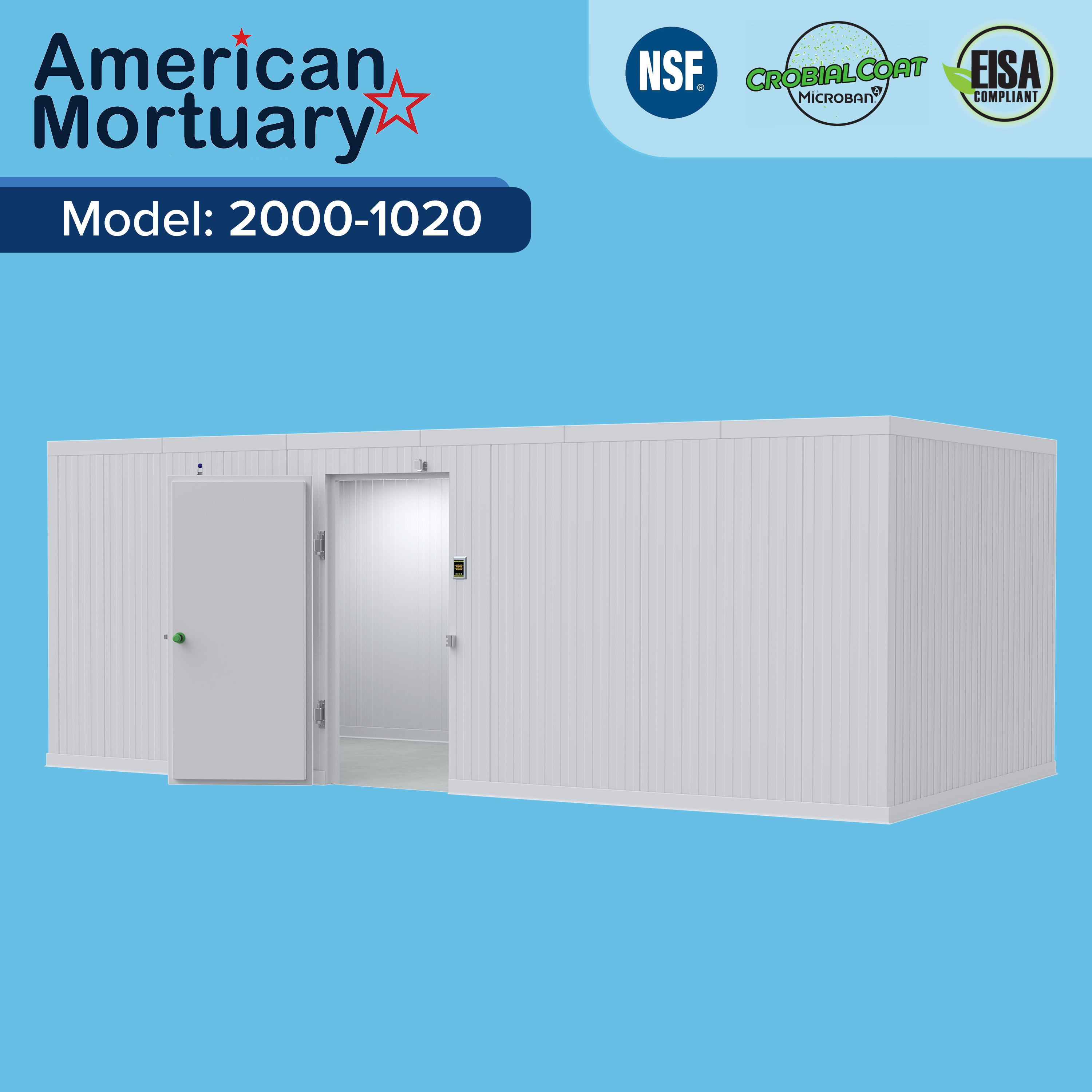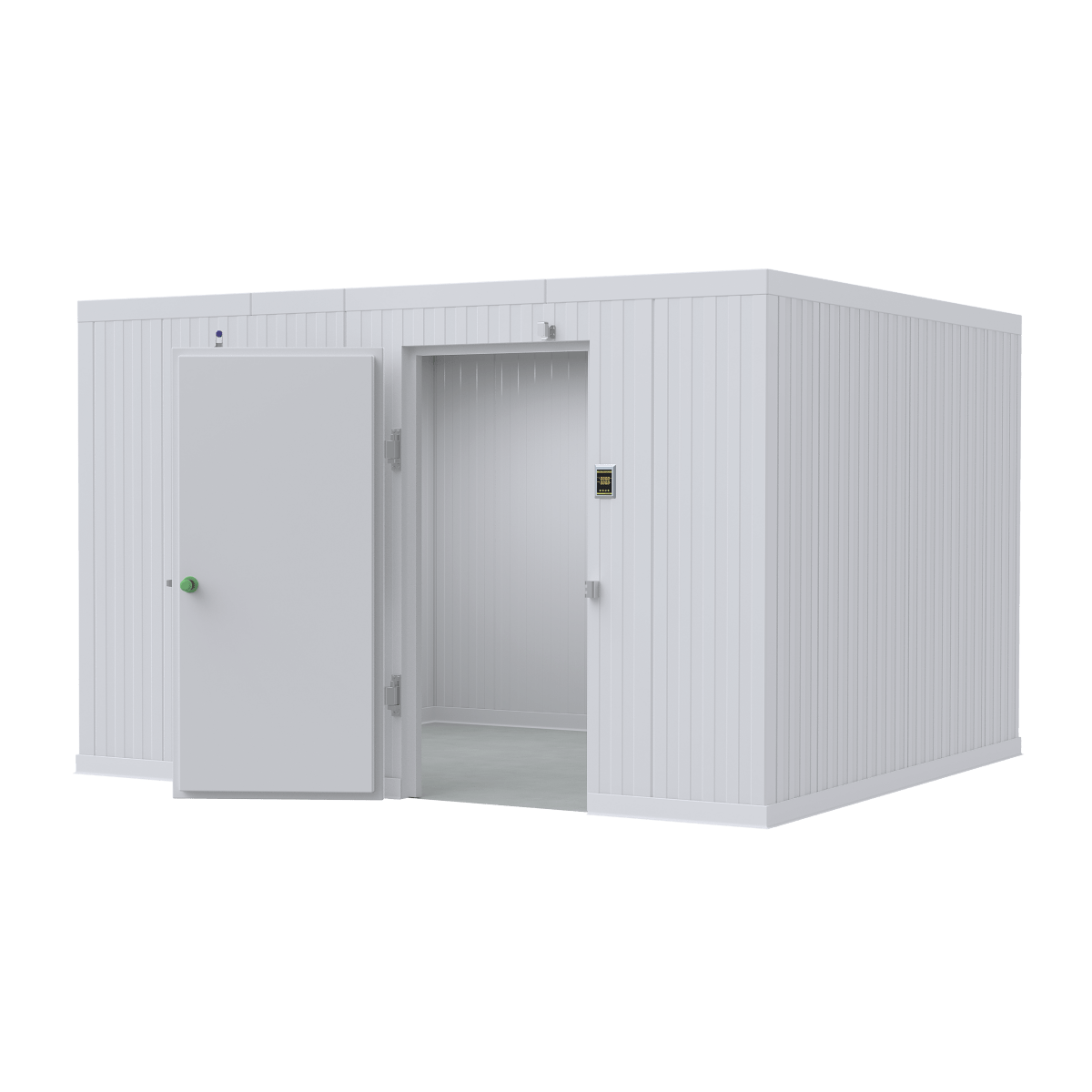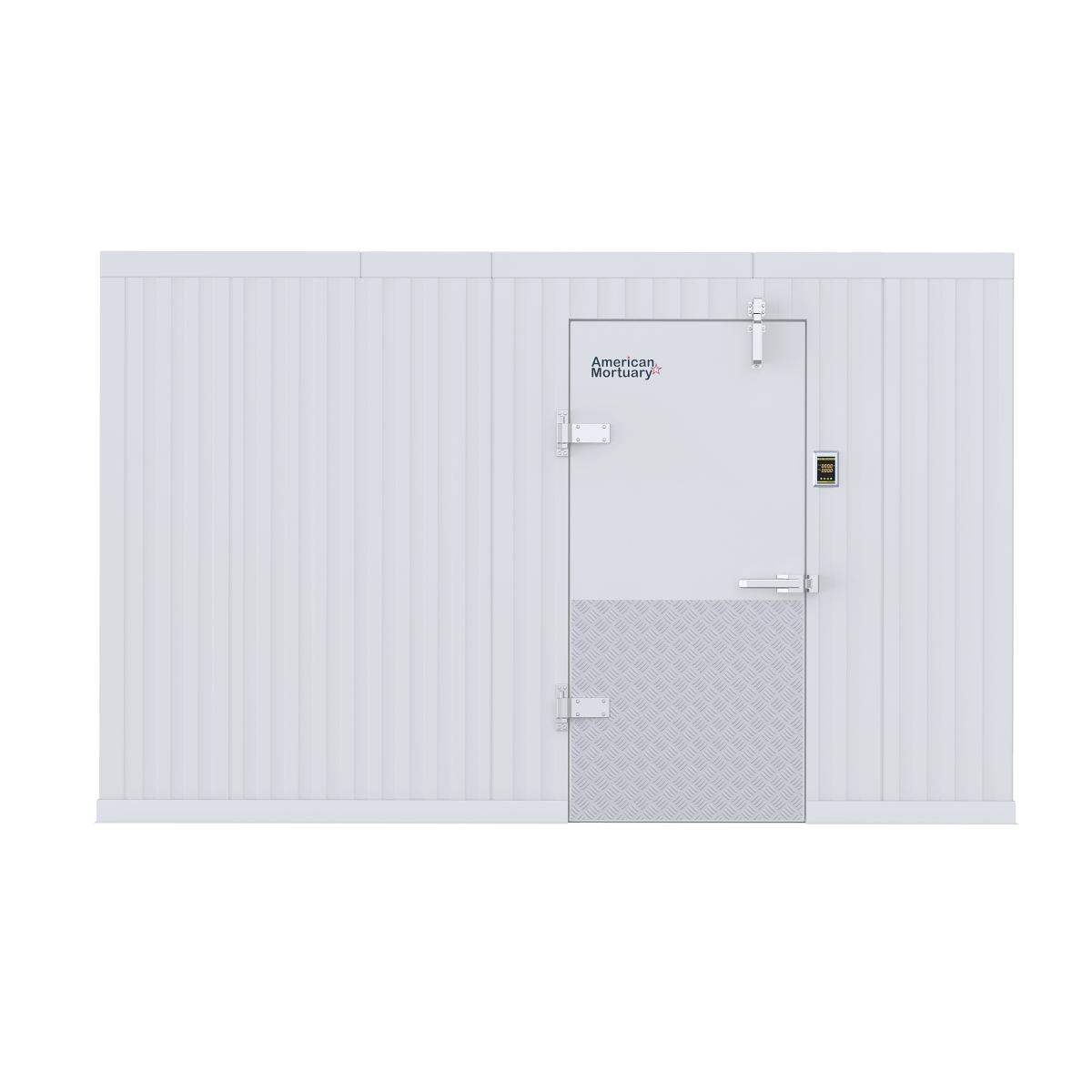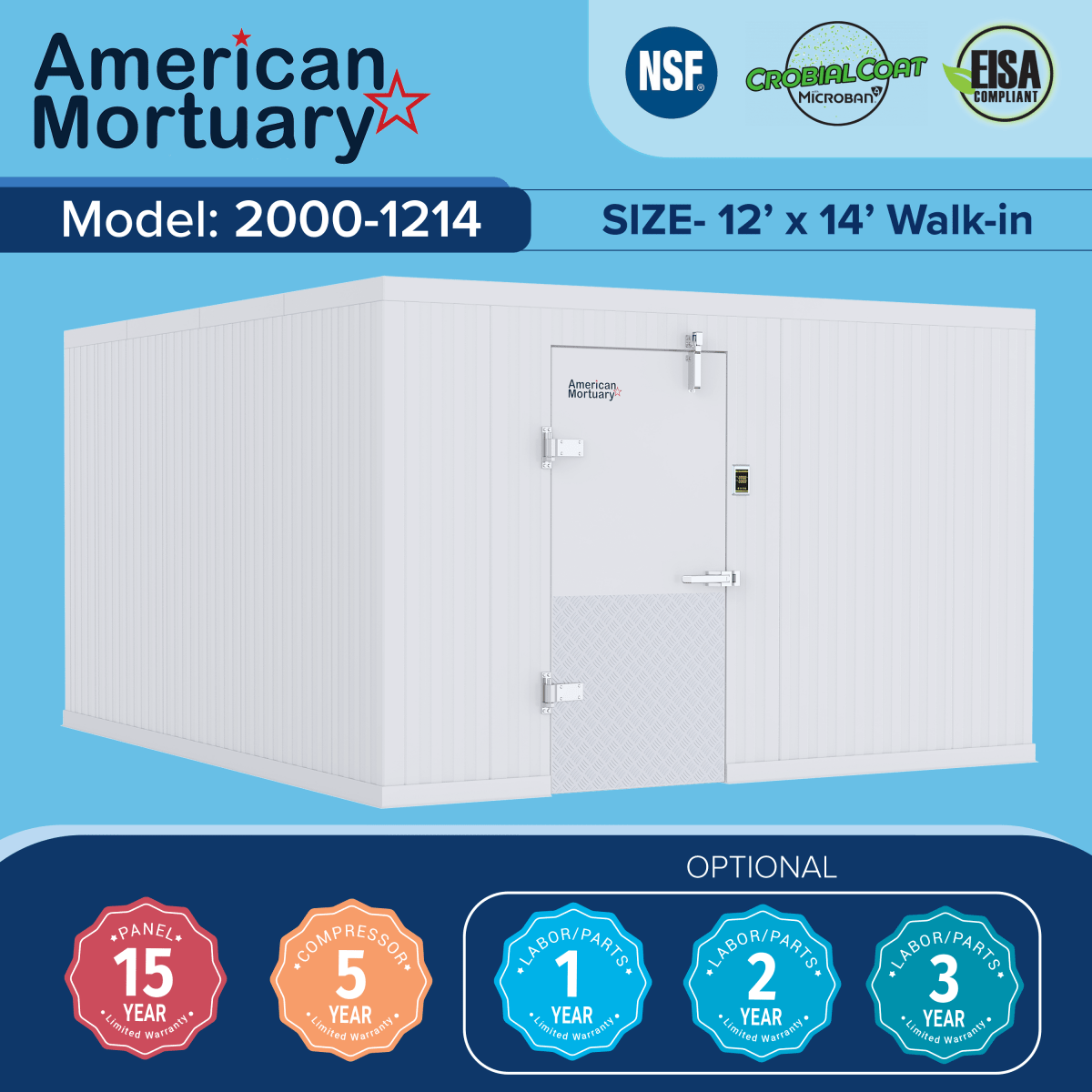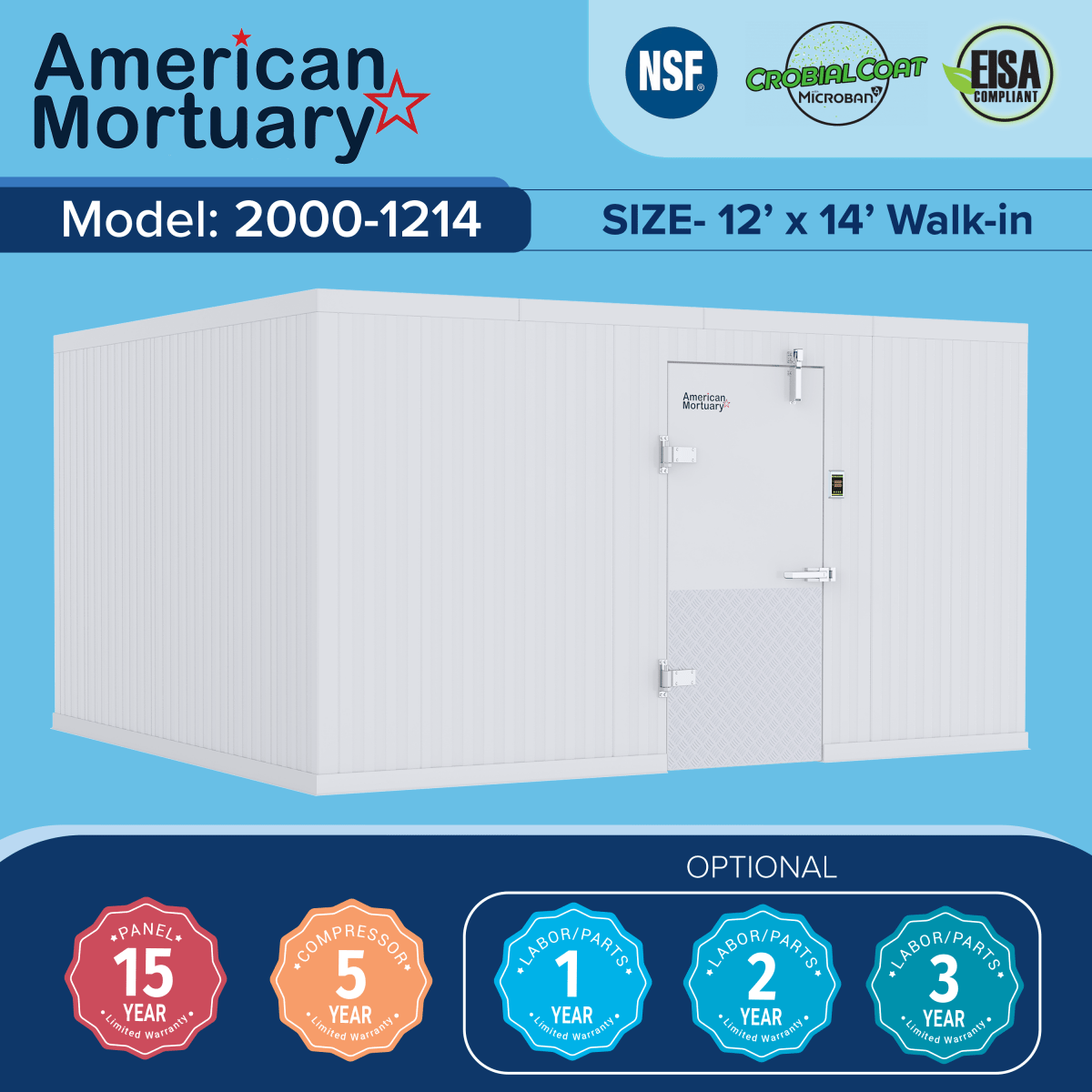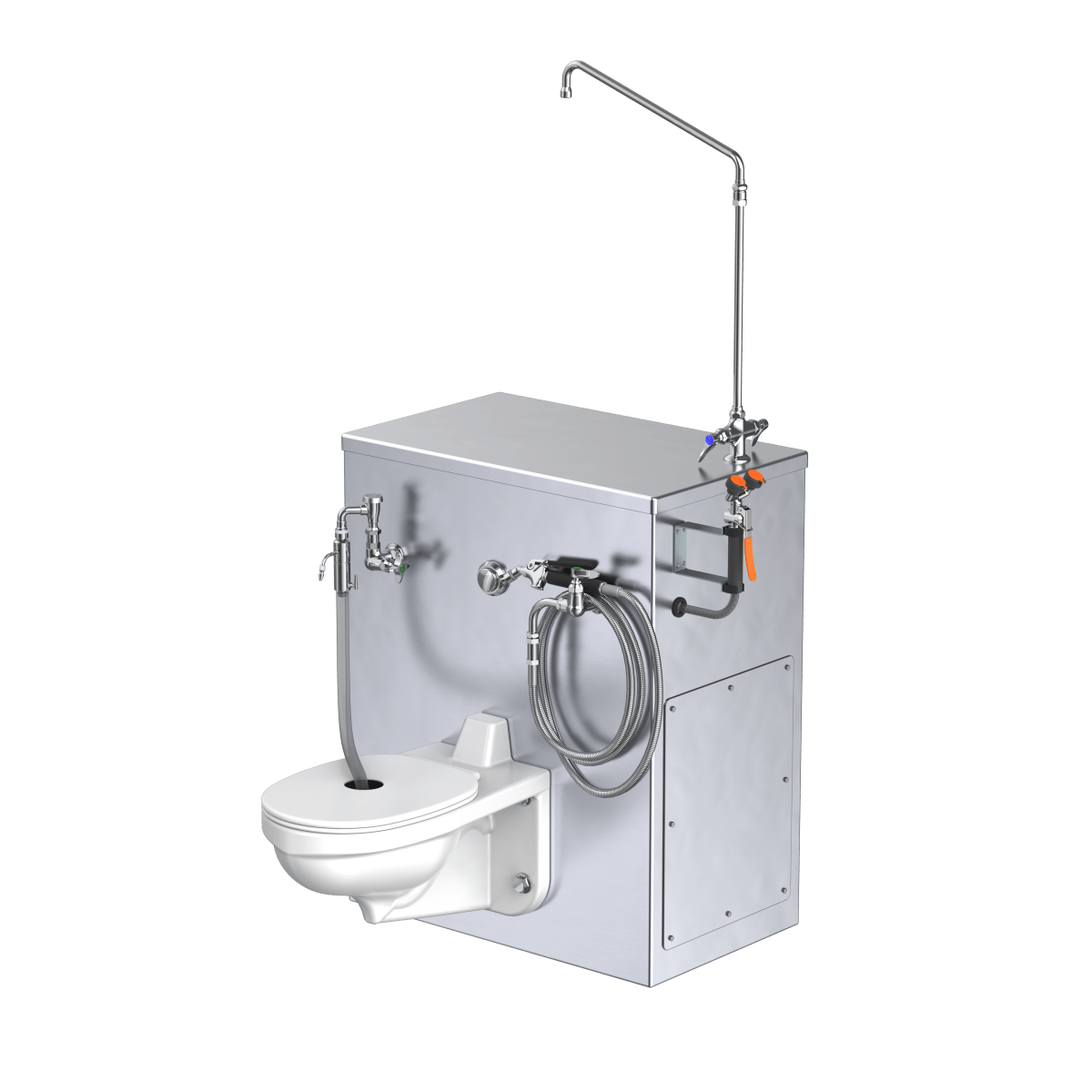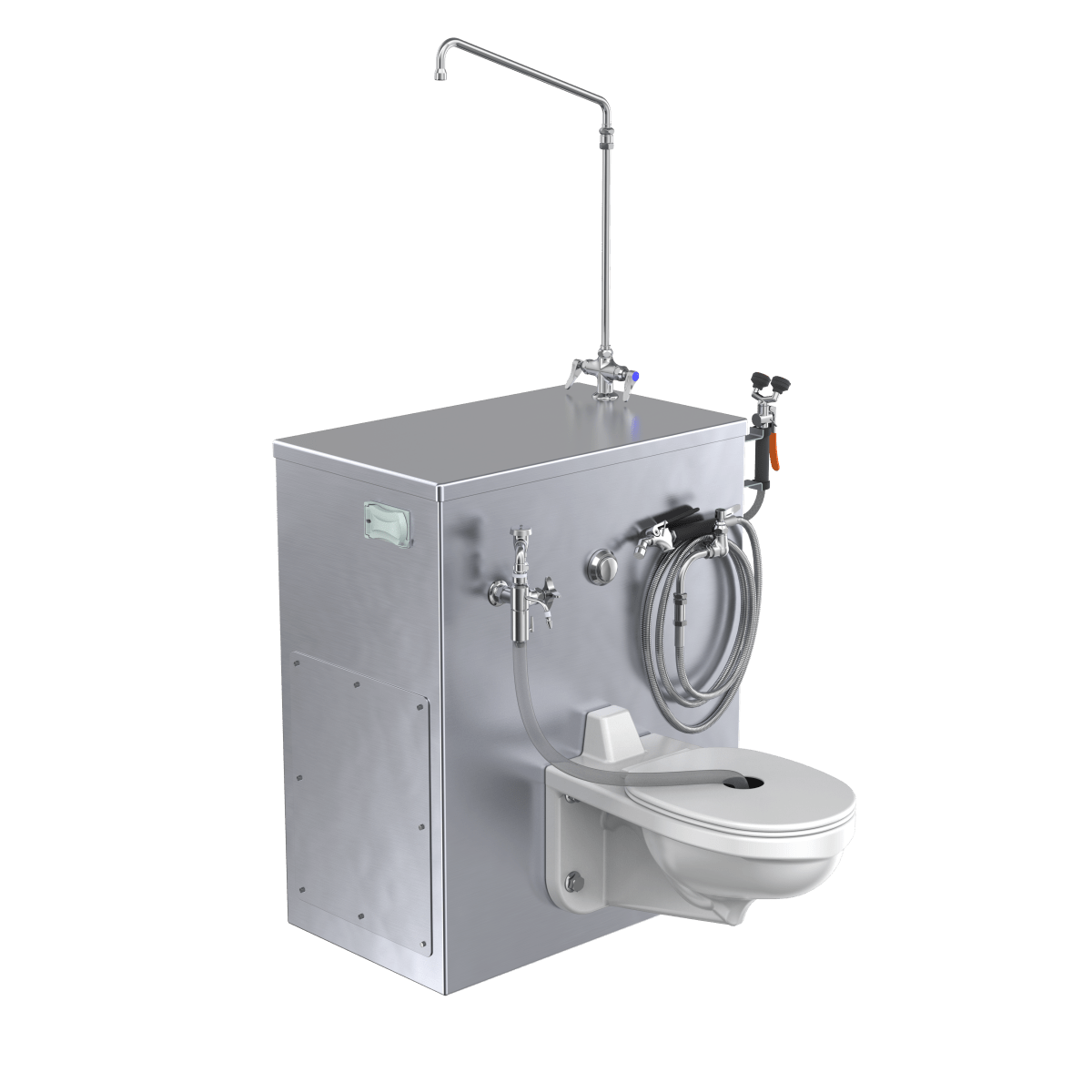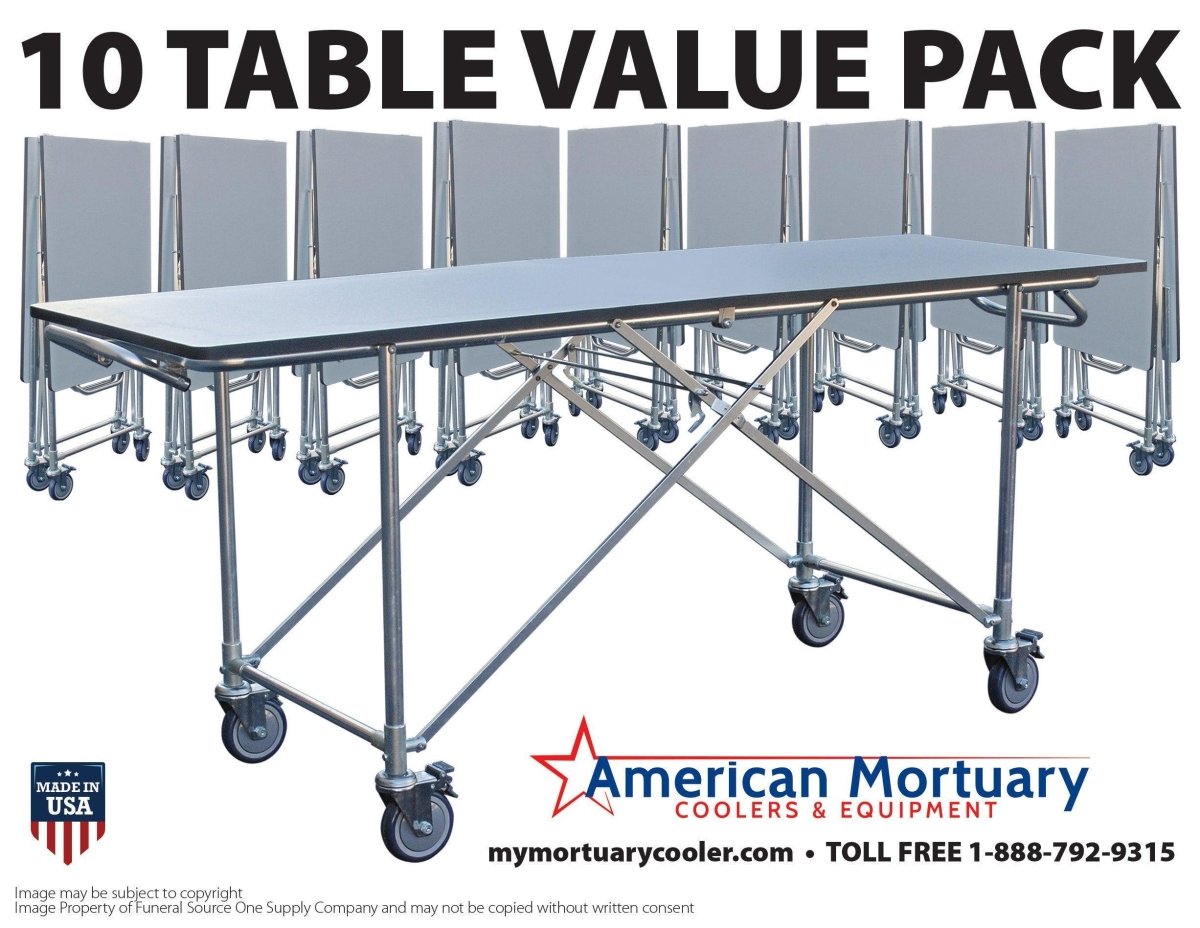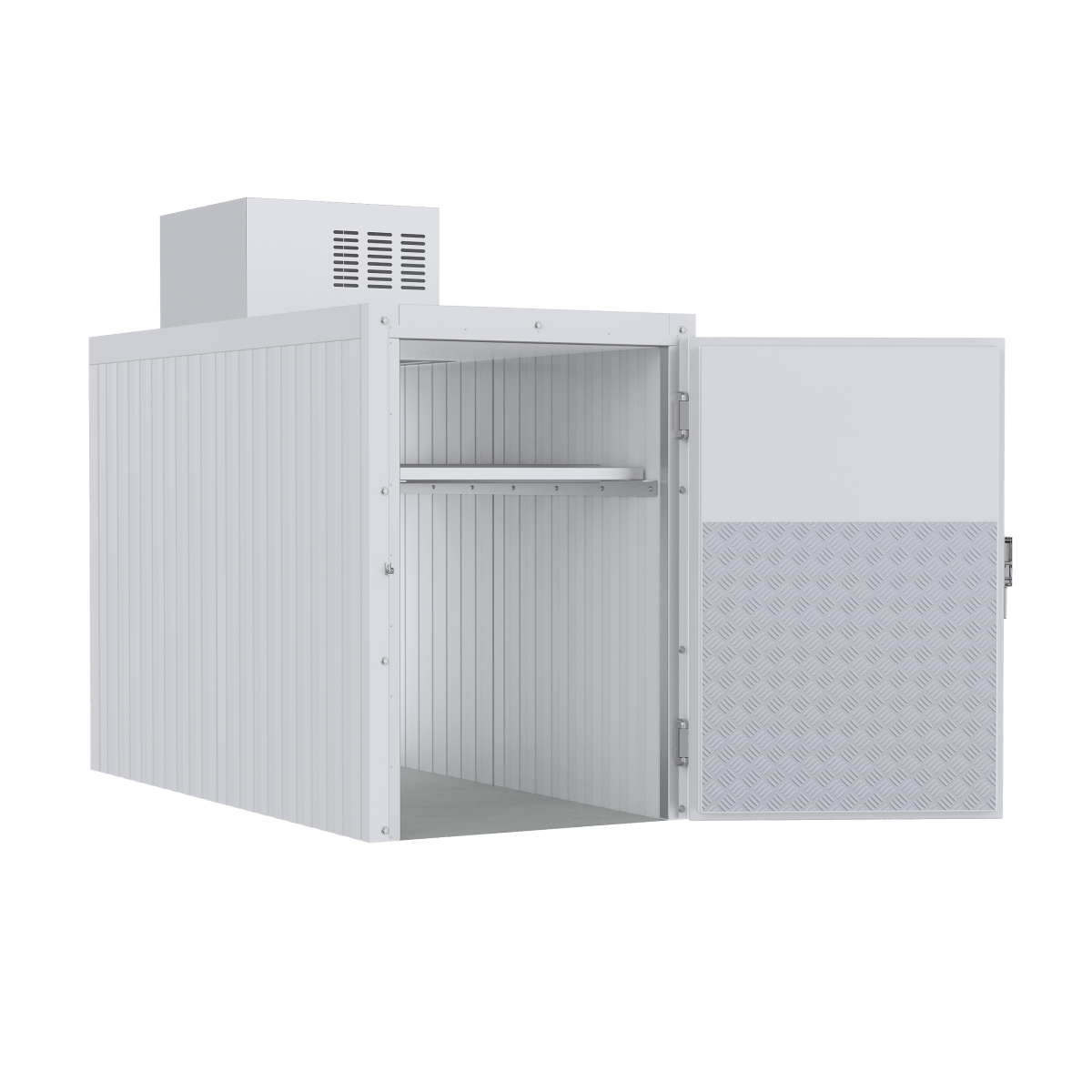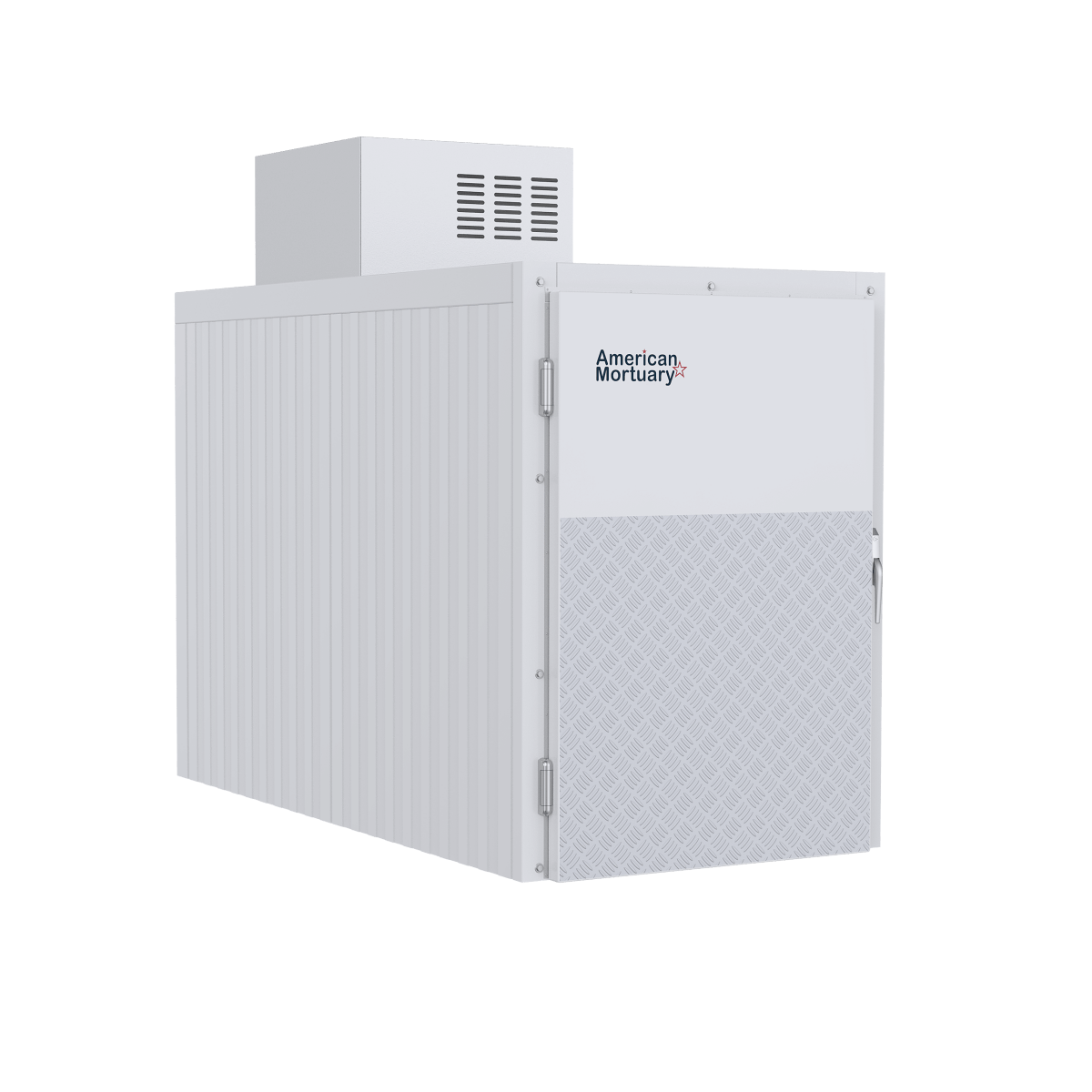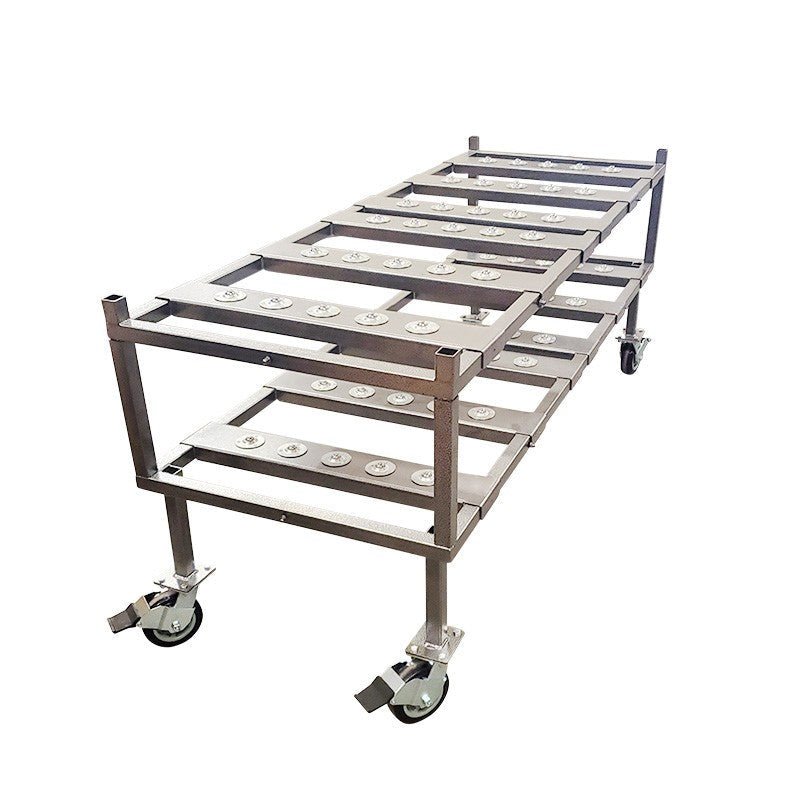Understanding Bioseal Body Bags: The Essential Guide for Funeral Professionals
Bioseal body bags are specialized containment systems designed for the secure handling, storage, and transport of human remains, particularly in high-risk situations involving infectious pathogens or advanced decomposition.
Quick Reference: Bioseal Body Bags
- Definition: Hermetically sealed containment pouches for human remains
- Key Types: System5® (BSL-4 rated), TC BodyBag® (self-sealing adhesive)
- Primary Features: Leak-proof, odor-proof, puncture-resistant
- Weight Capacity: Up to 400 lbs (System5®), 275 lbs (TC BodyBag®)
- Shelf Life: 49 years (System5®), 18 months (TC BodyBag®)
- Best For: Infectious disease containment, repatriation, mass fatality events
- Compliance: BSL-4, OSHA, IATA approved for air transport
Unlike traditional zippered body bags that often leak fluids and odors, bioseal body bags create a complete hermetic seal either through heat-sealing technology (System5®) or specialized cohesive adhesives (TC BodyBag®). These advanced containment solutions have become essential equipment for funeral homes, hospitals, military operations, and disaster response teams.
The CDC now requires System5® bags as the middle containment layer for Ebola victims, highlighting their critical role in preventing pathogen transmission. With moisture/vapor transmission rates tested to 0.0000001 parts per million, these specialized bags ensure no fluids, odors, or pathogens escape—providing maximum protection for staff and facilities.
I'm Mortuary Cooler, with over 15 years of experience advising funeral homes on optimal containment solutions including bioseal body bags for both routine and high-risk cases. My background in mortuary equipment has shown that proper containment is not just about compliance—it's about protecting your staff, facilities, and the dignity of those in your care.

Quick bioseal body bags definitions:
What Are BioSeal Body Bags?

When it comes to protecting your staff and preserving dignity in the most challenging cases, bioseal body bags are truly in a league of their own. Unlike anything else in your mortuary supplies, these aren't just bags—they're complete containment systems designed with extraordinary attention to detail.
Think of them as the ultimate shield between potentially hazardous remains and the outside world. The term "bioseal" isn't just clever marketing—it represents a genuine hermetic barrier that keeps everything contained, from fluids and odors to dangerous pathogens.
At American Mortuary Coolers, we've seen how these specialized pouches have revolutionized remains handling for our funeral director clients. Let me walk you through the two main types we recommend:
System5®
This is what I call the "Fort Knox" of body bags. Rated for Biosafety Level 4 (BSL-4) pathogens—yes, the same level used for Ebola and other nightmare scenarios—System5® doesn't mess around.
The secret is in its remarkable construction: multiple layers of co-laminated flexible metal and plastic create a 5-channel hermetic seal when heat-sealed properly. It can withstand punctures up to 26 pounds of pressure (impressive when you consider what standard bags can handle), and supports remains up to 400 pounds.
Perhaps most incredibly, when stored properly, System5® has a 49-year shelf life. That's not a typo—these bags will outlast most mortuary equipment you'll ever purchase. They're also completely compatible with X-ray equipment and cremation processes, making them versatile for various situations.
TC BodyBag®
For cases where heat-sealing isn't practical, the TC BodyBag® offers a brilliant alternative approach. Its translucent material allows for visual identification without breaking the seal—a feature many funeral directors appreciate.
Instead of heat-sealing, it uses an ingenious self-sealing cohesive adhesive that only bonds to itself, never to tissue or hair. The zipper-less design eliminates the most common leak points found in traditional bags. While not quite as heavy-duty as the System5®, it still handles remains up to 275 pounds and maintains an 18-month shelf life.
One thoughtful design element is the perforated blue liner that allows for controlled adhesive exposure during the sealing process—making it much easier to use than you might expect.
BioSeal Body Bags vs Traditional Zipper Bags
Let's be honest about traditional zippered bags—they're the industry standard because they're affordable and familiar, not because they're particularly effective. The differences between them and bioseal body bags are night and day:
Leak Prevention: Those plastic zipper teeth might as well be screen doors during a hurricane when it comes to containing fluids under pressure. Martin Oakes from Pace-Stancil Funeral Home put it perfectly: "What normally would have been a not so pleasant trip to the Medical Examiner's office with our old body bags was made with no problems whatsoever" when using the TC BodyBag®.
Odor Control: If you've ever dealt with decomposition cases, you know traditional bags do little to contain odors. Bioseal body bags have been tested to a moisture/vapor/transmission rate of 0.0000001 parts per million—essentially nothing gets through. One funeral director told us: "We recently used the CadSeal system on a body that was very decomposed with maggots... Once we heat sealed around the body there was no putrid smell at all and all leakage was kept within the CadSeal foil."
Fluid Barrier: Traditional bags often leak through seams and zippers, creating biohazard risks and uncomfortable situations. The multi-layer construction of System5® or the cohesive adhesive of TC BodyBag® creates a genuinely impenetrable barrier.
Durability: We've all experienced those heart-stopping moments when a standard vinyl bag tears during transport. Bioseal body bags offer significant puncture resistance, making them reliable even in challenging conditions or rough terrain.
Why BioSeal Body Bags Are Rated for BSL-4
When the CDC designates something as Biosafety Level 4 compliant, they're essentially saying it can safely contain the scariest pathogens known to humanity—those with no vaccines or treatments available. System5® bioseal body bags earn this rating through extraordinary engineering:
The 5-channel hermetic seal creates a barrier that prevents escape of even microscopic particles. This isn't theoretical—the U.S. military has rigorously tested these bags for containing the most dangerous biological threats. Perhaps most convincingly, System5® was successfully used to contain the first U.S. Ebola death in Dallas back in 2014.
That ultra-low MVTR rating of 0.0000001 parts per million means virtually nothing—no vapor, fluid, or pathogen—can penetrate the barrier in either direction. This level of protection is why the CDC now specifically requires System5® as the middle containment layer for Ebola victims.
For funeral professionals who take their responsibility to protect staff and the public seriously, bioseal body bags aren't just an upgrade—they're essential equipment for handling high-risk cases with confidence and dignity.
Key Models, Materials & Sealing Technology
The magic of bioseal body bags lies in their cutting-edge materials and innovative sealing technologies. Let's explore what makes these containment solutions so effective and how to choose the right one for your funeral home.
System5® Technology
System5® comes in two practical formats to suit different needs:
The 150-foot rolls (36 inches wide) are perfect for facilities handling multiple cases, with enough material for approximately 25 decedents. For those needing a ready-to-use solution, individual pre-cut pouches offer convenient single-case containment.
What makes System5® truly special is its remarkable construction. The proprietary co-laminated material combines flexible metal and multiple plastic layers to create a fortress-like barrier. This isn't your standard body bag material – it's engineered to provide complete fluid impermeability while remaining flexible enough for practical use.
The durability is impressive too. With significant puncture and tear resistance, these bags stand up to challenging conditions without compromising containment. They're also fully X-ray compatible, allowing examination without opening the seal. When cremation is needed, the material burns cleanly, generating less than 1% residue – a thoughtful design feature that respects the final disposition process.
Perhaps most impressive is the 49-year shelf life – yes, you read that correctly! This makes System5® ideal for emergency preparedness and long-term storage applications.

The heart of the System5® is its unique sealing mechanism. Rather than relying on failure-prone zippers or adhesives, it employs thermal sealing technology through the BioSeal Hand-Held Thermosealer. This clever device creates a 5-channel hermetic seal by applying controlled heat to the bag edges, forming a bond so secure it's completely tamper-evident.
Need to accommodate larger individuals? Two bags can be joined together for bariatric cases exceeding 400 pounds – a practical solution for a common challenge in modern funeral service.
TC BodyBag® Technology
For those seeking a different approach, the TC BodyBag® offers equally impressive but distinct technology.
Its translucent material allows for visual identification without breaking the seal – a thoughtful feature when verification is needed. The real innovation, however, is its proprietary cohesive adhesive system. Unlike standard adhesives that stick to everything (including hair and tissue), this specialized material only bonds to itself, making it remarkably user-friendly.
The clever perforated blue liner controls exactly where and when the adhesive is exposed, allowing for precise sealing without mess or fuss. Simply fold and press – no equipment needed. This makes TC BodyBags® particularly valuable for field work, disaster response, or facilities without specialized equipment.
With an 18-month shelf life and 275-pound capacity, these bags offer excellent performance for standard applications while maintaining the simple fold-and-press sealing method that requires minimal training.
As Martin Oakes from Pace-Stancil Funeral Home shared: "BioSeal's containment systems (TC) body bags handled the remains of a trauma case superbly. What normally would have been a not so pleasant trip to the Medical Examiner's office with our old body bags was made with no problems whatsoever."
For funeral professionals wanting to explore various body bag options and compare pricing, we've put together a comprehensive resource at Mortuary Body Bags: Affordable Options and Prices.
Step-by-Step Sealing & Best Practices
Properly sealing a bioseal body bag isn't just about following procedures—it's about ensuring dignity for the deceased and safety for everyone involved. Let me walk you through the process for both major types in a way that's easy to understand.
System5® Sealing Process

Getting started with the System5® is straightforward, even if the technology behind it is sophisticated. First, set your BioSeal Hand-Held Thermosealer to level 8 and give it about 10 minutes to reach proper temperature. While it's heating up, you can prepare your materials.
Measure and cut the System5® material with generosity—allow about 12 inches of extra material beyond the head and foot. This extra material ensures you'll have plenty to work with during the sealing process. Once cut, center the decedent on the material with ample material on all sides.
Now comes the actual pouch creation. Fold the material over the decedent to create what looks like an envelope or pouch. With your heated Thermosealer in hand, begin clamping the edges for 2-5 seconds per section. Work your way methodically around all four sides, paying special attention to corners where leaks most commonly occur.
A properly sealed System5® bag will show 5 distinct sealing channels in the material—this is your visual confirmation of a hermetic seal. If any section looks incomplete or questionable, simply reapply the Thermosealer to that area.
For our larger friends, the System5® accommodates bariatric cases exceeding 400 pounds by creating two separate pouches and joining them together with the Thermosealer. It's a simple solution to a challenging situation.
TC BodyBag® Sealing Process
The TC BodyBag® uses a different but equally effective approach. Begin by laying it flat, creating a generous 108" x 36" sheet. One of the nice features of this system is its adaptability—if you're working with a smaller decedent, you can trim the bag to an appropriate size.
Position the decedent in the center of the unfolded bag, then prepare for sealing by removing the perforated blue liner where needed. This exposes the special cohesive adhesive that only sticks to itself, not to hair or tissue—a thoughtful design feature that prevents those awkward moments of adhesive sticking where it shouldn't.
Fold the sides of the bag to the midline, pressing the adhesive areas together firmly. Then fold and roll the head and foot sections toward the body. Complete the process by patting the seams twice along the midline and rolling the head/foot seals toward the body for complete containment.

Best Practices for Both Systems
The beauty of both bioseal body bag systems is their user-friendliness. Most people can learn proper sealing techniques in under 10 minutes—no extensive training required. That said, always visually inspect seals before transport or storage. A quick check can prevent complications later.
Both systems feature tamper-evident designs, meaning they show clear evidence if they've been opened after sealing. This provides peace of mind and chain-of-custody assurance when handling sensitive cases.
When it comes to final disposition, both System5® and TC BodyBag® are cremation-safe. The System5® is particularly impressive, generating less than 1% residue upon incineration. And if you need to X-ray remains, the metal in System5® is thin enough to allow examination without removing the body from containment.
These practical features make bioseal body bags not just theoretical improvements over traditional bags, but truly functional advances in everyday funeral service.
For additional information about transporting deceased individuals safely and with dignity, please visit our guide on Compassionate Solutions for Deceased Human Transportation.
When, Where & Why to Use BioSeal Body Bags
When tragedy strikes, having the right tools makes all the difference. Bioseal body bags aren't just another item in your mortuary supplies—they're often the critical difference between containment and contamination, between dignity and distress.
Infectious Disease Containment
In our post-pandemic world, we've all become more aware of infection risks. Bioseal body bags shine brightest when dealing with highly infectious remains:
For those heart-wrenching cases involving Category A infectious substances like Ebola or Marburg, these specialized containment systems become non-negotiable. The CDC doesn't just recommend System5® bags for Ebola victims—they require them as the middle containment layer.
COVID-19 taught us hard lessons about preparation, and many funeral homes now maintain a supply of these specialized bags for cases where additional precautions feel warranted. They're equally valuable for remains affected by tuberculosis, hepatitis, or other bloodborne pathogens that pose risks to your staff.
When faced with unknown infectious agents—those cases where medical history is unclear—these bags provide peace of mind through maximum protection.
Mass Fatality Incidents

When disaster strikes—whether it's a tsunami in Southeast Asia, an airline crash, Hurricane Katrina, or the tragic events of September 11th—bioseal body bags become essential infrastructure for dignity and public health.
In these overwhelming situations, refrigeration capacity often can't keep pace. Identification and processing may take days or weeks. Transportation systems might be compromised. The extended containment capabilities of these specialized bags become invaluable when traditional methods simply can't keep up with the scale of loss.
As James Whitfield, a disaster response coordinator with 20 years of experience, once told me, "In mass fatality events, these bags aren't just equipment—they're how we maintain humanity in the face of overwhelming tragedy."
Repatriation of Remains
Bringing loved ones home across international borders presents unique challenges. Bioseal body bags make this difficult process somewhat easier:
They meet International Air Transport Association (IATA) requirements for air transport, eliminating regulatory problems. At roughly 840g for CadSeal (with similar weights for System5®), these solutions dramatically reduce the weight compared to traditional zinc-lined coffins. The savings in freight costs can be substantial—often thousands of dollars per repatriation.
Many countries now accept these modern containment solutions as alternatives to traditional hermetically sealed caskets, simplifying customs clearance during an already stressful time.
Advanced Decomposition Cases
Sometimes, we face remains in advanced stages of decomposition. In these challenging situations, bioseal body bags provide superior containment that protects both dignity and your facility.
David Gauld from Funeral Services Ltd shared this powerful testimony: "We recently used the CadSeal system on a body that was very decomposed with maggots etc and usually a decomposing body would make our whole branch smell. We used the CadSeal system and once we heat sealed around the body there was no putrid smell at all and all leakage was kept within the CadSeal foil."
The complete hermetic seal prevents odor escape, fluid leakage, insect migration, and cross-contamination—allowing you to maintain a professional environment even in difficult cases.
Additional Applications
The versatility of bioseal body bags extends beyond human remains. Veterinarians, researchers, and wildlife management professionals use them for animal remains. Hospital morgues benefit from their ability to provide temporary storage without refrigeration. Military operations in remote environments rely on their portability and effectiveness.
Emergency management agencies include them in preparedness stockpiles, and forensic or academic institutions use them for long-term storage of remains in their collections.
Storage Considerations
What makes these products particularly valuable for emergency preparedness is their remarkable shelf life:
System5® maintains its effectiveness for an astonishing 49 years when stored in stable conditions between 45-75°F (7-24°C). The TC BodyBag® offers an 18-month shelf life—more than adequate for regular rotation in busy facilities.
This extended viability makes System5® particularly valuable for agencies that must maintain readiness for those infrequent but high-consequence events that we all hope never happen, but must prepare for nonetheless.
For more information about essential equipment for morgue facilities, visit our comprehensive guide: Essential Morgue Equipment Suppliers & Facilities.
At American Mortuary Coolers, we understand the critical role these specialized containment solutions play in your operation. We're always available to help you evaluate which bioseal body bags best suit your specific needs and circumstances.
BioSeal vs Other Containment Solutions
When it comes to protecting your staff and maintaining dignity for the deceased, choosing the right containment solution matters tremendously. Let's compare how bioseal body bags stack up against traditional alternatives you might be considering.
Traditional Vinyl Body Bags
We've all been there – that moment when you realize a traditional zippered bag isn't providing the protection you need. Standard vinyl body bags have served the funeral industry for decades, but they come with significant drawbacks:
The zipper teeth often separate under pressure, allowing fluids to escape exactly when you don't want them to. The vinyl material itself does little to block odors, which can quickly permeate an entire facility. And we've all experienced that sinking feeling when finding a tear or puncture at the worst possible moment. Most importantly, these traditional bags simply weren't designed for serious infectious disease control.
Bioseal body bags were specifically engineered to address these exact limitations, giving funeral professionals much-needed peace of mind.
CadSeal Foil and Similar Metal Film Solutions
CadSeal and comparable metal film solutions offer a middle-ground approach that many funeral homes find valuable:
These products use specialized metal film construction that creates a genuinely airtight and watertight barrier. Their heat-sealed edges provide true hermetic containment, and their IATA approval means they're widely accepted as alternatives to zinc-lined coffins for international repatriation.
At approximately 840g per envelope, they're remarkably lightweight, while still being X-ray compatible and cremation-safe. As one funeral director shared with us: "We used the CadSeal system on a very decomposed body... once we heat sealed around the body there was no putrid smell at all and all leakage was kept within the CadSeal foil."
These solutions excel for international transport but may not offer the same level of puncture resistance as the premium System5® option.
Traditional Zinc-Lined Coffins
For decades, international repatriation required zinc-lined coffins – a solution that created as many problems as it solved:
The excessive weight of these containers significantly increases shipping costs and handling difficulties. They're dramatically more expensive than modern bioseal body bags, and their bulkiness makes them nearly impossible to transport empty to disaster sites. From an environmental perspective, they're neither biodegradable nor resource-efficient.
Modern bioseal body bags offer equal or superior containment while eliminating these longstanding challenges – a true win-win for funeral professionals and families alike.
Refrigeration Requirements
Perhaps the most practical advantage of bioseal body bags is how they transform refrigeration needs:
While traditional bags require immediate refrigeration to control decomposition and odor, bioseal solutions create a hermetic environment that contains all gases and fluids. This can potentially eliminate or significantly reduce refrigeration requirements – a game-changer during mass fatality events when refrigeration capacity is strained, during power outages, in remote locations, or simply when trying to manage operational costs.
Comparative Analysis
| Feature | System5® | TC BodyBag® | CadSeal | Traditional Zipper Bag |
|---|---|---|---|---|
| Biosafety Level | BSL-4 | Standard | Standard | Minimal |
| Sealing Method | Heat-sealed (5-channel) | Cohesive adhesive | Heat-sealed | Zipper |
| Weight Capacity | 400 lbs | 275 lbs | Variable | 200-300 lbs |
| Shelf Life | 49 years | 18 months | Variable | 1-2 years |
| Refrigeration Need | Minimal/None | Reduced | Reduced | Required |
| Cremation Safety | Yes (<1% residue) | Yes | Yes | Variable |
| Transparency | No | Yes | No | No |
| IATA Approved | Yes | Variable | Yes | No |
| Puncture Resistance | 26 lbs | Moderate | Moderate | Low |
| Specialized Equipment | Thermosealer required | None required | Heat sealer required | None required |
At American Mortuary Coolers, we've seen how the right containment solution can transform a funeral home's operations, safety profile, and even its reputation in the community. The initial investment in premium bioseal body bags often pays dividends through reduced refrigeration costs, eliminated leak incidents, and improved staff safety.
For those interested in the scientific foundations behind biosafety levels and containment protocols that inform these products, additional information can be found in this resource on Scientific research on biosafety levels.
Frequently Asked Questions About BioSeal Body Bags
Working with funeral homes across the country, we hear certain questions time and again about bioseal body bags. Let me share the most common ones—and provide the straightforward answers you need.
How long can remains stay sealed without refrigeration?
This is the million-dollar question, especially when you're dealing with disaster response or limited cooler space.
The impressive thing about System5® bioseal body bags is their ability to contain all fluids, gases, and odors for extended periods. With their hermetic seal and virtually impenetrable barrier (tested to 0.0000001 parts per million moisture/vapor transmission rate), they're built for long-term containment.
While the bags themselves can sit on a shelf for up to 49 years, how long they'll effectively contain remains without refrigeration depends on several factors:
- The condition of the remains when sealed
- The surrounding temperature
- The size and weight of the deceased
- Any pre-existing conditions or infections
In practical terms, remains properly sealed in System5® can remain without refrigeration for weeks rather than days—without odor escape or fluid leakage. During Hurricane Katrina and other mass fatality events, this capability proved invaluable when refrigeration simply wasn't available.
The TC BodyBag®, while not quite as robust as the System5®, still dramatically outperforms traditional zippered bags for non-refrigerated containment.
Are BioSeal body bags approved for air transport and cremation?
For air transport: Yes, absolutely. System5® bioseal body bags meet all International Air Transport Association (IATA) requirements for human remains transportation, including those with infectious diseases.
Whether you're handling domestic transfers or international repatriation, these bags satisfy airline requirements. Their hermetic seal ensures compliance with IATA's Airport Handling Manual guidelines—a critical consideration if your funeral home regularly handles international cases.
For cremation: Both System5® and TC BodyBag® are completely cremation-safe. The System5® material is particularly impressive, generating less than 1% residue during cremation, so it won't damage equipment or contaminate remains.
What many crematory operators appreciate is that the metal foil component is thin enough that you don't need to remove it before cremation—unlike traditional metal containers. This means you can transfer directly to cremation without breaking the seal, which is especially important with infectious remains.
Can BioSeal products be resized for infants or bariatric cases?
One of the most practical features of bioseal body bags is their adaptability to different sizes:
For smaller remains (infants, children, or partial remains), both options work wonderfully:
- System5® material can be cut to any appropriate size before sealing
- TC BodyBag® comes as a 108" × 36" sheet that you can trim as needed
For larger individuals:
- System5® has a standard weight capacity of 400 pounds
- For those exceeding this limit, you can join two System5® pouches together using the Thermosealer
- The 5-channel seal maintains BSL-4 containment even at the junction points
This flexibility means you don't need to stock multiple sizes—one product adapts to all your needs, from the smallest infant to the largest adult. This not only simplifies your inventory but reduces waste and improves cost efficiency.
What training is required to use BioSeal products effectively?
The learning curve is intentionally gentle, with different requirements for each type:
TC BodyBag® is remarkably user-friendly:
- No special equipment needed
- Most staff learn the technique in under 5 minutes
- Uses a simple fold-and-press method
- Includes a perforated liner that guides the process
System5® requires a bit more training:
- Uses the BioSeal Hand-Held Thermosealer
- Training typically takes about 10 minutes
- Focuses on proper heat sealing technique and verification
- BioSeal offers a Certified Operator Program for institutions who want formal training
We've found that most funeral homes pick up the techniques quickly. Many distributors provide training videos or in-person demonstrations when you purchase. The straightforward design ensures that even during stressful emergency situations, staff can deploy these solutions effectively.
How do I know if a BioSeal bag is properly sealed?
Checking the seal is crucial—even the best bioseal body bags will fail if not sealed correctly.
For TC BodyBag®, look for:
- Complete adhesive contact along all seams
- No gaps or separation when patting seams along the midline
- Properly rolled head/foot seals toward the body
- Uniform adhesion throughout the closure area
With System5®, verification is equally straightforward:
- You should see 5 distinct channels in the thermal seal
- Pay special attention to corners—they must be completely sealed
- Check for continuous seal lines with no gaps or thin spots
- Look for the tamper-evident indicators that change if the seal is broken
At American Mortuary Coolers, we're committed to helping funeral professionals properly implement these advanced containment solutions. We understand that the integrity of your containment directly impacts the safety of your staff and the dignity of those in your care.
Conclusion
When it comes to protecting your staff and treating the deceased with dignity, choosing the right bioseal body bags matters more than you might think. After helping hundreds of funeral homes upgrade their containment systems, I've seen how this decision impacts everything from staff safety to family peace of mind.
Think of selecting the right bioseal body bag as an investment in your facility's reputation and your team's wellbeing. Here's what to consider before making your choice:
First, honestly assess your risk level. Are you regularly handling infectious cases? If you're dealing with high-risk pathogens, the BSL-4 rated System5® provides hospital-grade protection. For routine cases with better-than-standard containment, the more accessible TC BodyBag® might be perfect.
Your day-to-day operations matter too. A facility that handles international repatriation needs different solutions than one focused primarily on local services. I recently spoke with a funeral director in Florida who switched to System5® after struggling with traditional bags during hurricane season evacuations—the difference was night and day.
Don't overlook storage considerations. The System5®'s remarkable 49-year shelf life makes it ideal for emergency preparedness, while the TC BodyBag®'s 18-month viability works well for facilities with regular turnover. One rural funeral home I work with keeps a small stock of System5® bags "just in case," while using TC BodyBags® for routine operations.
Staff training shouldn't be complicated. Both systems are designed to be learned quickly, but the Thermosealer required for System5® does need a bit more practice. Most teams pick it up in under 10 minutes, though—it's not rocket science.
While bioseal body bags typically cost more upfront than traditional zippered bags, consider the complete picture. Many funeral homes report significant savings from reduced refrigeration needs and eliminated leak clean-ups. Plus, the peace of mind for both staff and families is priceless.
Here at American Mortuary Coolers, we're committed to helping funeral professionals create safer, more dignified environments. Based in Tennessee but serving all 48 contiguous states, we understand the unique challenges you face. We've designed our custom mortuary coolers to work seamlessly with advanced containment solutions like bioseal body bags, creating comprehensive systems for modern funeral facilities.
For those looking to upgrade their mortuary equipment alongside their containment protocols, I encourage you to explore our guide on More info about mortuary coolers.
Choosing advanced containment isn't just about compliance—it's about showing families that you care enough to invest in the very best practices. In my fifteen years working with funeral homes across America, I've seen how these seemingly small decisions can profoundly impact a facility's reputation and success.
Your commitment to excellence matters. And sometimes, that excellence starts with something as seemingly simple as a better body bag.


